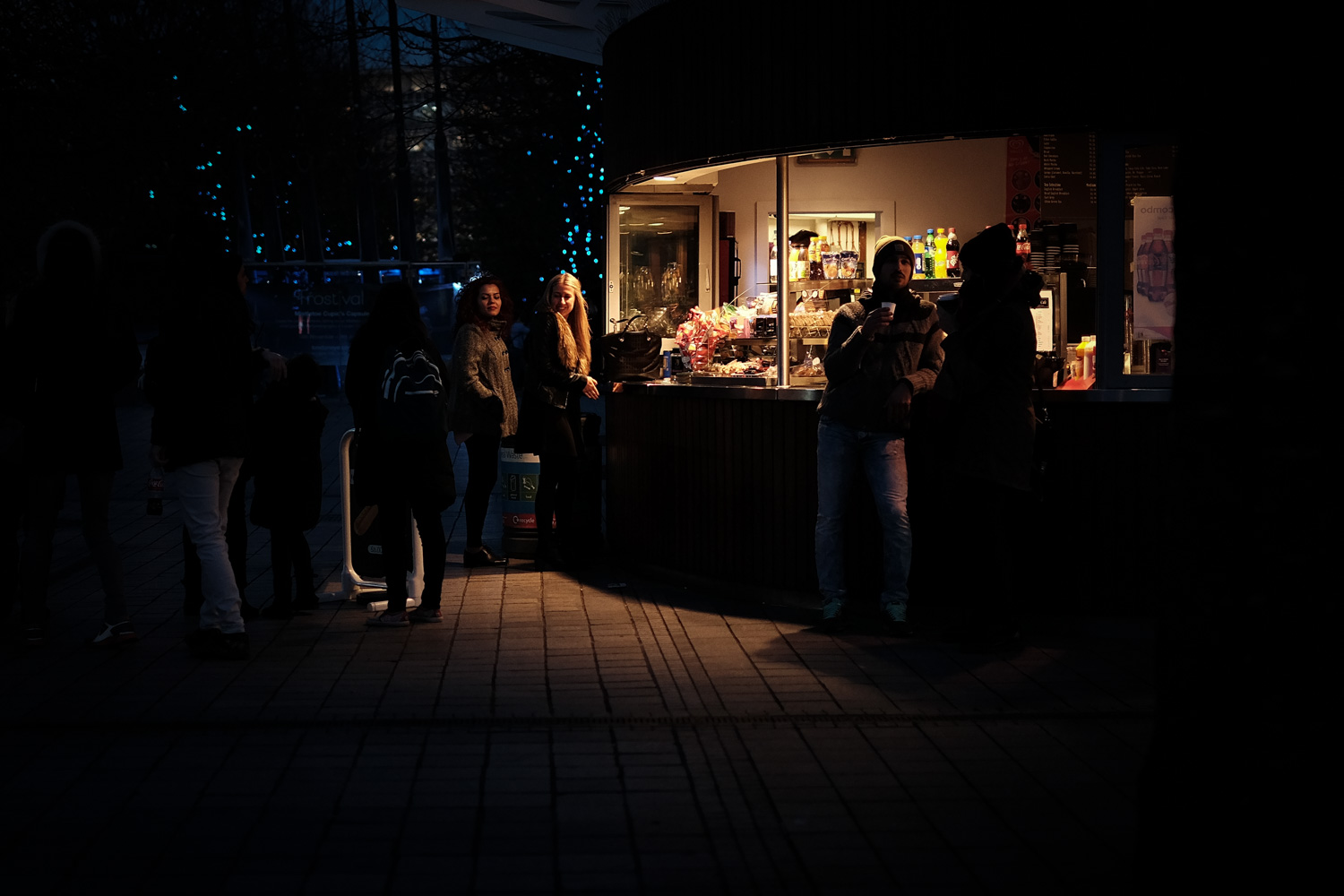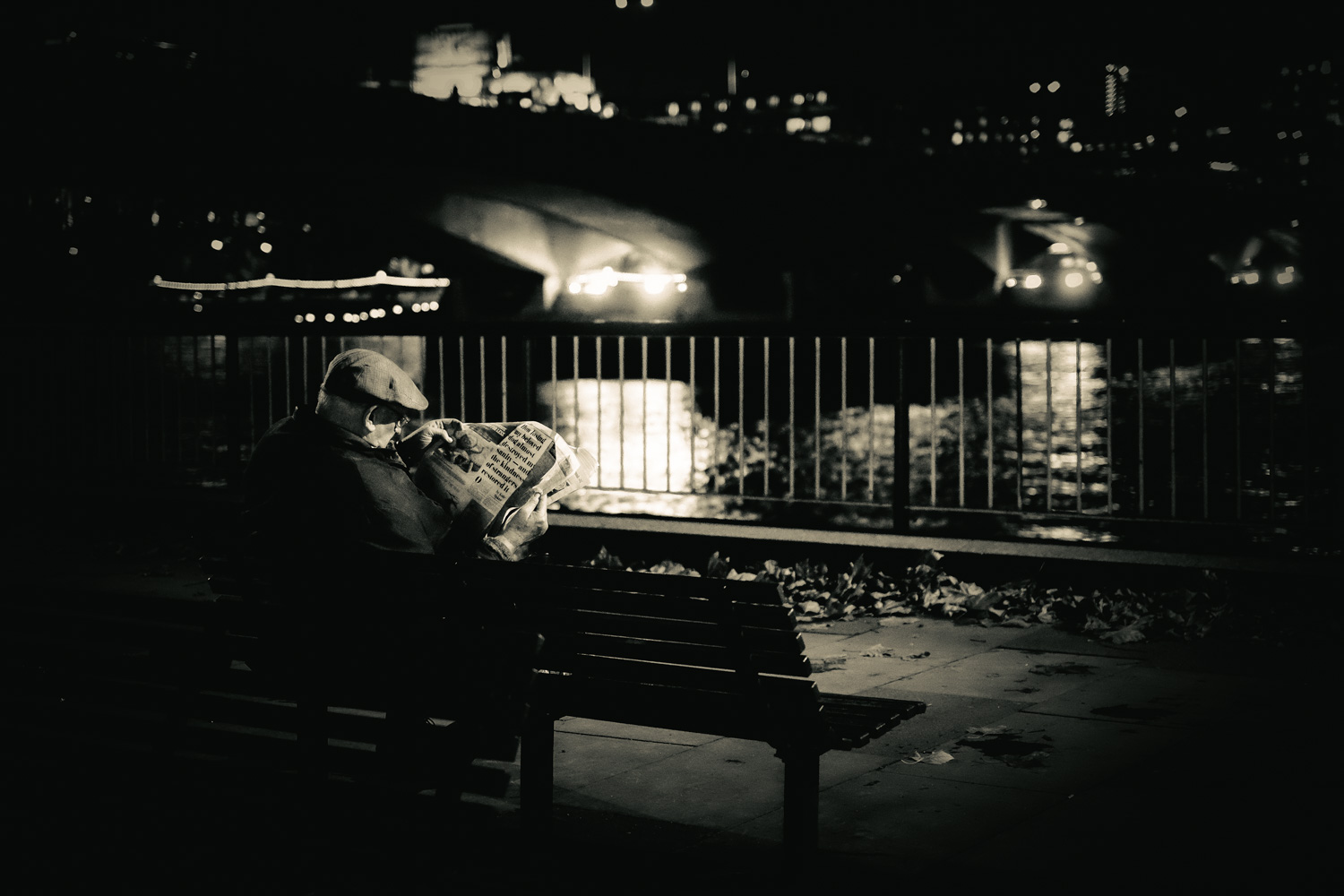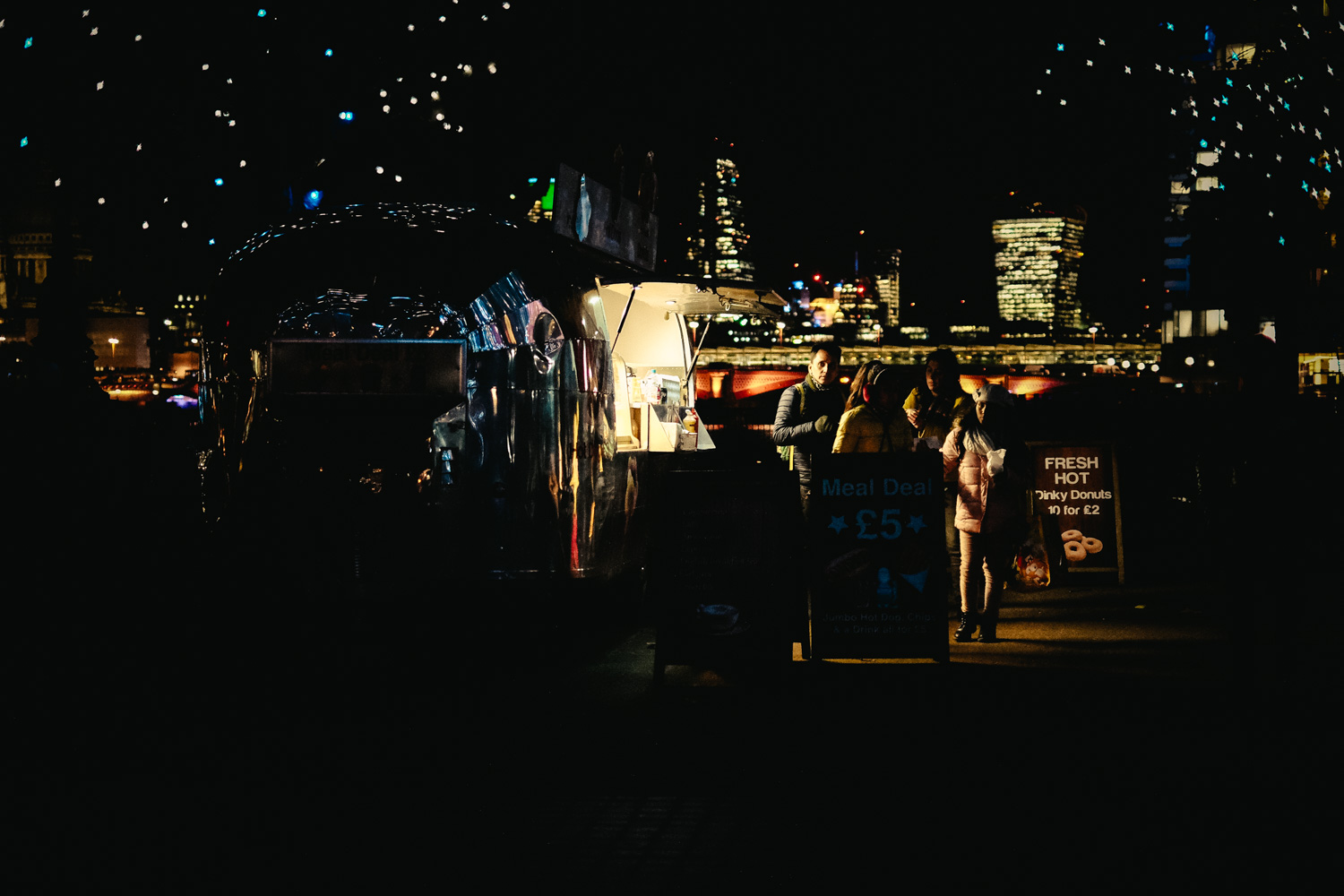Lets be honest, most street photographers, myself included are fair-weather photographers. As long as it’s dry, warm and light we are out there taking pictures. But for a lot of us as soon as dusk falls and it gets colder, it’s time to pack up and go home. However some really exciting and atmospheric photographs can be taken at night.The night adds a brand new dimension to otherwise “ordinary” street scenes that you would encounter during the day. This is true nearly anywhere, but applies particularly well to cities; in a city environment colours and lights are in abundant supply, emanating from neon signs, streetlights and lampposts, car lights, storefronts, and even people with their Smartphones.
The truth is the Fuji X series makes for a great camera to carry on shooting with when night does fall. The main reason being is that you can quite happily shoot at 3200 or even 6400 ISO and come back with great quality results. Furthermore if you shoot with the X-T1 as I do and couple this with a weather resistant lens (yes the new 35mm f2 is on my Xmas list!) then even rain need not deter you.
Of course if you are already out there shooting at night then give yourself a pat on the back!
So here are my top ten tips for shooting at night if you haven’t already given it a go:
- Leave your flash and tripod at home as they don’t make for good street photography bedfellows. You are trying to remain unobtrusive remember.
- Shoot with prime lenses if you have the option. This is because you can shoot with a wider aperture, for example f1.4 on the original 35mm lens. This will help in keeping the ISO down to an acceptable level.
- As mentioned earlier in the main you are going to have to ramp up the ISO to around the 3200 to 6400 range. Personally I don’t go higher than this as the subsequent noise, to my eyes at least, is unacceptable.
- During the day I usually prefer to use a shutter speed of around 1/250. However at night this will prove impossible, so you will have to go with a longer speed. Try however to keep your shutter speed above 1/60 if you can to ensure that your photos aren’t spoilt by camera shake or subject movement (unless that’s the effect you’re after of course).
- Shoot in RAW preferably as the files have more latitude in post-production than JPEGs. Especially if you want to bring out shadow detail and control noise.
- Learn to use manual focus. You may find that your camera has trouble locking onto your subject with auto-focus in the low light conditions. At least the Fuji’s give us lots of tools to assist in manually focusing. E.g. focus peaking
- If you use auto-focus, make sure you turn off the focus assist light in the menu and your flash if it’s built in. You don’t want to announce yourself to your subjects!
- Look for the light. After all there’s little in the sky, unless you’re shooting under a full moon on a cloudless night. Obviously we are talking artificial light in the main. For example, shop windows. These make excellent light sources, lighting up the faces and the area close to the window. Another good source and one commonly found these days are people viewing their Smartphones and Tablets. They light up their face better than any studio light! Another more obvious source of light is street lamps and they can act as a beautifully concentrated pool of light.
- Don’t ignore dusk. This often makes for better photos, as the sky will come out a nice dark rich blue rather than pitch black. You better be quick though because it doesn’t last for long.
- Finally, be careful with your gear. Keep it close and secure you don’t want to get mugged.























